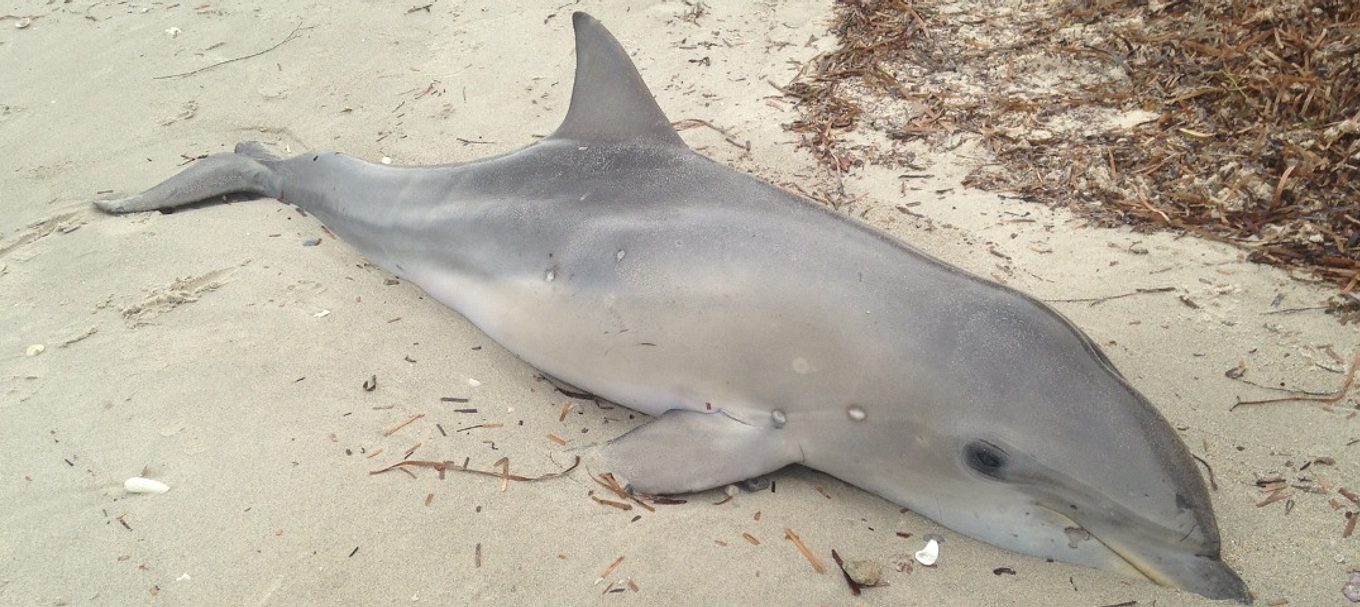
What to do if you find a stranded marine mammal in South Australia
When you see a live stranded marine mammal – a whale, dolphin, seal or sea lion – your first instinct might be to rush to the animal and immediately put it back into the water, but there are some things you need to know first, to keep both yourself and the animal safe.
Before you try to assist the animal, it’s best to contact your local National Parks and Wildlife Service Regional Duty Officer first. They will be able to provide you with advice over the phone and may send experienced personnel with equipment to assist with the incident.
Why do animals get stranded?
There are many reasons why a whale or dolphin may strand, including illness, injury, disorientation, or if a dependent calf has been separated from its mother. It’s important that you keep this in mind before attempting to help an animal return to the water.
In the case of a very sick or badly injured animal, it may not be in the best interest of the animal to return it to the water. A suitably trained National Parks and Wildlife Service ranger or an experienced marine mammal vet will undertake an assessment where possible.
If a whale or dolphin continues to strand after being returned to the water, this tells us it is likely too sick to be returned to sea.
It is common for seals and sea lions to come out of the water for a rest on the beach or rocks. This is not a stranding, and you should keep your distance from the animal. If you encounter this situation while you’re out walking your dog, make sure you keep your dog away too.
What should you do if you find a stranded live whale or dolphin?
If you encounter a stranded whale or dolphin, and only if you have appropriate protective wear on hand (see the section below about diseases), there are a few things that you can do to make the animal more comfortable:
- Dig out the sand under the animal’s pectoral fins so they are in a more comfortable position.
- Limit noise and talking around the animal.
- Place a wet towel or sheet over the animal’s body, but be sure not to cover its blowhole.
- Keep the sheets or towels wet.
You should not:
- step over the animal
- walk anywhere near its tail flukes
- let pets near the animal
- drag the whale or dolphin back to sea, or pick them up by their pectoral fins or tail flukes, as this can cause further injuries.
Remember, before you try to assist the animal, you should contact your local National Parks and Wildlife Service Regional Duty Officer for advice first.
What should you do if you find a stranded dead whale or dolphin?
If you find a dead whale or dolphin, contact a National Parks and Wildlife Service Regional Duty Officer, or the contact the SA Museum.
Can these animals be carrying diseases?
Zoonoses are infectious diseases caused by pathogens, for example bacteria, viruses and parasites, that can spread between animals, including humans.
Marine mammals are known to carry a range of zoonoses, and potentially zoonotic diseases, which include Brucella, golden staph, toxoplasmosis, Q fever and tuberculosis.
Zoonotic diseases can be spread by air, passed through direct contact, or by coming into contact with bodily fluids.
Before helping any marine mammals, you should protect yourself from potential zoonotic diseases by wearing rubber gloves, a face mask, eye protection, long pants and long sleeves, and cover up any cuts or abrasions on your skin.
If you are assisting a whale or dolphin, don’t position yourself near or downwind from the animal’s blow hole. Like people, whales and dolphins can also spread germs through their breath. When they breathe out through their blow holes, and diseases the animal might be carrying can spread easily through the air, especially if it’s windy.
You should also avoid unnecessarily touching the animal to prevent being exposed to bacteria and viruses and to reduce stress to the animal.
What information should you report?
A lot of the science about whales and dolphins has been learnt through studying stranded animals. If you come across a stranded animal, it’s important to collect as much information as possible, including taking photos.
Useful information includes the date and time you found the animal, the location of the stranding and the size of the animal.
As for photos, try to capture images of the whole animal from different views, as well as close-up shots of the animal’s head, dorsal fin, flippers and tail. Including an object in your photos for scale is also useful.
This information, along with your name and contact details, can be sent to your local National Parks and Wildlife Service Regional Duty Officer for recording.
All information collected about stranded whales and dolphins in SA is recorded and compiled into a database.
The records can help scientists identify potential trends in disease, vessel strike, and species susceptible to entanglements in fishing gear and marine debris.
Key contacts
To report a stranded marine mammal in SA, contact your National Parks and Wildlife Service Regional Duty Officer
Some alternative contacts include:
- PIRSA Fishwatch hotline (calls will be answered 24 hours a day, 7 days a week) 1800 065 522
- SA Museum 0434 906 744 or 0421 754 848
For information on what to do if you find an injured land animal, visit theNational Parks and Wildlife Service South Australia’s website.
This story was originally posted in July 2020.





